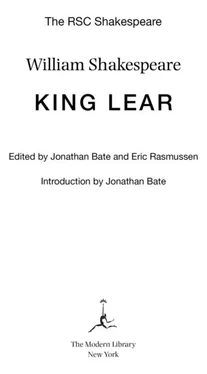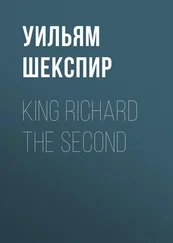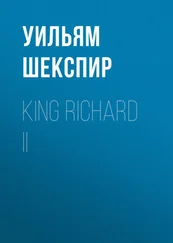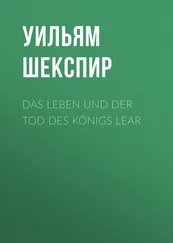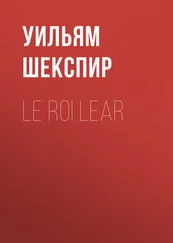уильям шекспир - King Lear
Здесь есть возможность читать онлайн «уильям шекспир - King Lear» весь текст электронной книги совершенно бесплатно (целиком полную версию без сокращений). В некоторых случаях можно слушать аудио, скачать через торрент в формате fb2 и присутствует краткое содержание. Год выпуска: 2011, ISBN: 2011, Издательство: Random House Publishing Group, Жанр: Старинная литература, на английском языке. Описание произведения, (предисловие) а так же отзывы посетителей доступны на портале библиотеки ЛибКат.
- Название:King Lear
- Автор:
- Издательство:Random House Publishing Group
- Жанр:
- Год:2011
- ISBN:978-1-58836-828-7
- Рейтинг книги:3 / 5. Голосов: 1
-
Избранное:Добавить в избранное
- Отзывы:
-
Ваша оценка:
- 60
- 1
- 2
- 3
- 4
- 5
King Lear: краткое содержание, описание и аннотация
Предлагаем к чтению аннотацию, описание, краткое содержание или предисловие (зависит от того, что написал сам автор книги «King Lear»). Если вы не нашли необходимую информацию о книге — напишите в комментариях, мы постараемся отыскать её.
King Lear — читать онлайн бесплатно полную книгу (весь текст) целиком
Ниже представлен текст книги, разбитый по страницам. Система сохранения места последней прочитанной страницы, позволяет с удобством читать онлайн бесплатно книгу «King Lear», без необходимости каждый раз заново искать на чём Вы остановились. Поставьте закладку, и сможете в любой момент перейти на страницу, на которой закончили чтение.
Интервал:
Закладка:
Locationsare provided by the Folio for only two plays. Eighteenth-century editors, working in an age of elaborately realistic stage sets, were the first to provide detailed locations. Given that Shakespeare wrote for a bare stage and often an imprecise sense of place, we have relegated locations to the explanatory notes, where they are given at the beginning of each scene where the imaginary location is different from the one before. We have emphasized broad geographical settings rather than specifics of the kind that suggest anachronistically realistic staging. We have therefore avoided such niceties as “another room in the palace.”
Act and Scene Divisionswere provided in the Folio in a much more thoroughgoing way than in the Quartos. Sometimes, however, they were erroneous or omitted; corrections and additions supplied by editorial tradition are indicated by square brackets. Five-act division is based on a classical model, and act breaks provided the opportunity to replace the candles in the indoor Blackfriars playhouse, which the King’s Men used after 1608, but Shakespeare did not necessarily think in terms of a five-part structure of dramatic composition. The Folio convention is that a scene ends when the stage is empty. Nowadays, partly under the influence of film, we tend to consider a scene to be a dramatic unit that ends with either a change of imaginary location or a significant passage of time within the narrative. Shakespeare’s fluidity of composition accords well with this convention, so in addition to act and scene numbers we provide a running scene count in the right margin at the beginning of each new scene, in the typeface used for editorial directions. Where there is a scene break caused by a momentary bare stage, but the location does not change and extra time does not pass, we use the convention running scene continues . There is inevitably a degree of editorial judgment in making such calls, but the system is very valuable in suggesting the pace of the plays.
Speakers’ Namesare often inconsistent in Folio. We have regularized speech headings, but retained an element of deliberate inconsistency in entry directions, in order to give the flavor of Folio.
Verseis indicated by lines that do not run to the right margin and by capitalization of each line. The Folio printers sometimes set verse as prose, and vice versa (either out of misunderstanding or for reasons of space). We have silently corrected in such cases, although in some instances there is ambiguity, in which case we have leaned toward the preservation of Folio layout. Folio sometimes uses contraction (“turnd” rather than “turned”) to indicate whether or not the final “-ed” of a past participle is sounded, an area where there is variation for the sake of the five-beat iambic pentameter rhythm. We use the convention of a grave accent to indicate sounding (thus “turnèd” would be two syllables), but would urge actors not to overstress. In cases where one speaker ends with a verse half-line and the next begins with the other half of the pentameter, editors since the late eighteenth century have indented the second line. We have abandoned this convention, since the Folio does not use it, and nor did actors’ cues in the Shakespearean theater. An exception is made when the second speaker actively interrupts or completes the first speaker’s sentence.
Spellingis modernized, but older forms are occasionally maintained where necessary for rhythm or aural effect.
Punctuationin Shakespeare’s time was as much rhetorical as grammatical. “Colon” was originally a term for a unit of thought in an argument. The semicolon was a new unit of punctuation (some of the Quartos lack them altogether). We have modernized punctuation throughout but have given more weight to Folio punctuation than many editors, since, though not Shakespearean, it reflects the usage of his period. In particular, we have used the colon far more than many editors: it is exceptionally useful as a way of indicating how many Shakespearean speeches unfold clause by clause in a developing argument that gives the illusion of enacting the process of thinking in the moment. We have also kept in mind the origin of punctuation in classical times as a way of assisting the actor and orator: the comma suggests the briefest of pauses for breath, the colon a middling one, and a full stop or period a longer pause. Semicolons, by contrast, belong to an era of punctuation that was only just coming in during Shakespeare’s time and that is coming to an end now: we have accordingly only used them where they occur in our copy texts (and not always then). Dashes are sometimes used for parenthetical interjections where the Folio has brackets. They are also used for interruptions and changes in train of thought. Where a change of addressee occurs within a speech, we have used a dash preceded by a full stop (or occasionally another form of punctuation). Often the identity of the respective addressees is obvious from the context. When it is not, this has been indicated in a marginal stage direction.
Entrances and Exitsare fairly thorough in Folio, which has accordingly been followed as faithfully as possible. Where characters are omitted or corrections are necessary, this is indicated by square brackets (e.g. “[and Attendants ]”). Exit is sometimes silently normalized to Exeunt and Manet anglicized to “remains.” We trust Folio positioning of entrances and exits to a greater degree than most editors.
Editorial Stage Directionssuch as stage business, asides, indications of addressee and of characters’ position on the gallery stage are only used sparingly in Folio. Other editions mingle directions of this kind with original Folio and Quarto directions, sometimes marking them by means of square brackets. We have sought to distinguish what could be described as directorial interventions of this kind from Folio-style directions (either original or supplied) by placing in the right margin in a smaller typeface. There is a degree of subjectivity about which directions are of which kind, but the procedure is intended as a reminder to the reader and the actor that Shakespearean stage directions are often dependent upon editorial inference alone and are not set in stone. We also depart from editorial tradition in sometimes admitting uncertainty and thus printing permissive stage directions, such as an Aside? (often a line may be equally effective as an aside or a direct address—it is for each production or reading to make its own decision) or a may exit or a piece of business placed between arrows to indicate that it may occur at various moments within a scene.
Line Numbersare editorial, for reference and to key the explanatory and textual notes.
Explanatory Notesexplain allusions and gloss obsolete and difficult words, confusing phraseology, occasional major textual cruces, and so on. Particular attention is given to nonstandard usage, bawdy innuendo, and technical terms (e.g. legal and military language). Where more than one sense is given, commas indicate shades of related meaning, slashes alternative or double meanings.
Textual Notesat the end of the play indicate major departures from the Folio. They take the following form: the reading of our text is given in bold and its source given after an equals sign, with “Q” indicating one that derives from the principal Quarto, “F2” one that derives from the Second Folio of 1632, and “Ed” one that derives from the editorial tradition. The rejected Folio (“F”) reading is then given. A selection of Quarto variants and plausible unadopted editorial readings are also included. Thus, for example, at Act 1 Scene 1 line 299, “ plighted= F. Q = pleated.” This indicates that we have retained the Folio reading “plighted” and that “pleated” is an interestingly different reading in the Quarto.
Читать дальшеИнтервал:
Закладка:
Похожие книги на «King Lear»
Представляем Вашему вниманию похожие книги на «King Lear» списком для выбора. Мы отобрали схожую по названию и смыслу литературу в надежде предоставить читателям больше вариантов отыскать новые, интересные, ещё непрочитанные произведения.
Обсуждение, отзывы о книге «King Lear» и просто собственные мнения читателей. Оставьте ваши комментарии, напишите, что Вы думаете о произведении, его смысле или главных героях. Укажите что конкретно понравилось, а что нет, и почему Вы так считаете.
